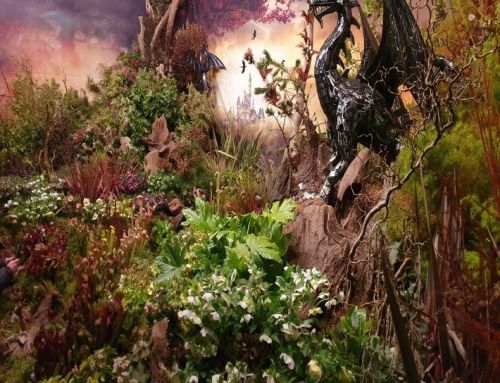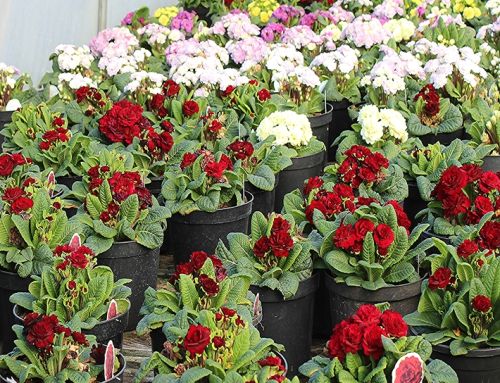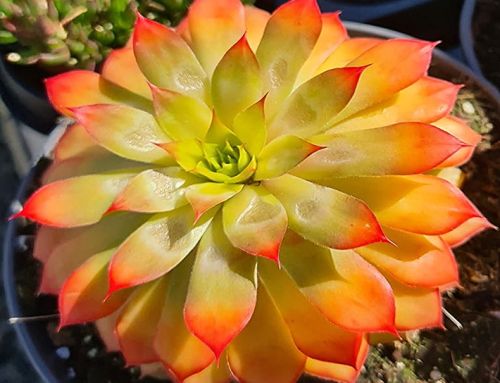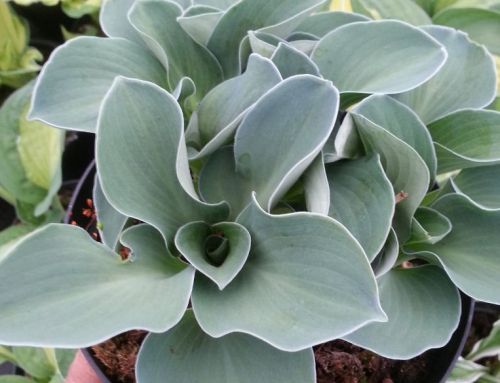Tradescantia
Commonly called Spiderwort (due to the fact that when stems are cut they secrete a substance that is silky like a spiders web. It is a wonderfully diverse vibrant species, boasting garden varieties and some that are far more tropical, (the Commelinacea) which are ideal as houseplants.
Tradescantia ‘Zebrinia’ is probably one of the commonly known houseplant varieties. It prefers a partially sunny site in the home in normal household conditions but will struggle in the cold. It has a sprawling trailing habit which can be trained to climb. Water well but allow to dry out between watering to prevent rot. Mist regularly to give it that jungle feel that it likes. Cuttings can be easily taken by pulling off and poking in the pot. They are not overly hungry plants, a small feed during the growing season is ideal.
Tradescantia are very desirable houseplants that take me back to my childhood, My mother always had one and it gradually over the years grew wider and longer and had its own corner in the kitchen. They are quite easily grown if some basic rules are followed. Today there are many different varieties available, some rare and very collectible. Houseplants have taken a surge in popularity in recent years, that jungle look in any home is quite desirable, lets face it, any gardening lover is always going to want to bring the outdoors in.
 We are lucky enough to have some lovely varieties at the nursery. Tradescantia ‘Flame Dance’ is a newer variety which boasts the same trailing habit of ‘Zebrinia’ but this wonderful variety has thicker silvery bands which lend themselves to becoming ruby red in intense light. Another absolutely stunning variety is ‘Sweet tabby’, which looks as though an artist has brushed every leaf with fine strokes to mix those tricolours, a truly wonderful variety. If you are after a lighter coloured variety, Tradescantia fluminensis ‘Aurea’ is a beautiful gold variety which will illuminate a dull area in your home. This variety prefers indirect sunlight, this is a must as direct sunlight will burn its leaves, it also only requires watering once a week. As well as this incredible bold foliage, these Tradescantia do produce small flowers which are quite wonderful for how they float about the plant quite majestically. However other varieties have more significant flowers, Tradescantia ‘Brevifolia’ are found on the exposed slopes of North Mexico and Texas, they spread well and unlike some of the other varieties have vibrant pink flowers, a nice variety is ‘Scout’ which has deep pink flowers and the usual trailing habit but with bold dark leaves.
We are lucky enough to have some lovely varieties at the nursery. Tradescantia ‘Flame Dance’ is a newer variety which boasts the same trailing habit of ‘Zebrinia’ but this wonderful variety has thicker silvery bands which lend themselves to becoming ruby red in intense light. Another absolutely stunning variety is ‘Sweet tabby’, which looks as though an artist has brushed every leaf with fine strokes to mix those tricolours, a truly wonderful variety. If you are after a lighter coloured variety, Tradescantia fluminensis ‘Aurea’ is a beautiful gold variety which will illuminate a dull area in your home. This variety prefers indirect sunlight, this is a must as direct sunlight will burn its leaves, it also only requires watering once a week. As well as this incredible bold foliage, these Tradescantia do produce small flowers which are quite wonderful for how they float about the plant quite majestically. However other varieties have more significant flowers, Tradescantia ‘Brevifolia’ are found on the exposed slopes of North Mexico and Texas, they spread well and unlike some of the other varieties have vibrant pink flowers, a nice variety is ‘Scout’ which has deep pink flowers and the usual trailing habit but with bold dark leaves.
If you didn’t want a variety that was quite as large and bold, Gibasis are members of the same family as Tradescantia but with thinner leaves. ‘Tahitian Bridal Veil’ has wonderful velvety purple leaves that point like arrows as their stems trail along. This Gibasis has lots of smaller leaves and a more erratic spreading style due to the lightness of its branches. It is almost fairy like but as the leaves are so beautiful it really does make a statement in a completely different way to the ‘Zebrinia’ leaf types.
Some varieties have become very desirable , ‘Jose Puig’ is a very sought after variety which has wonderful glossy dark purple (almost black) leaves that form with an almost neon green framing. They are very vivid and truly stand out. As the plant matures and develops a clump, the rich colours really develop and become enthralling. This variety again is very fond of humidity and will thrive with misting.
 Tradescantia sometimes get a bad reputation because they end up looking a bit limp in the pot, this very much happens with overwatering. Tradescantia absolutely hate being soaked, and hate moisture sitting on their leaves for too long, therefore it is vital to water the soil and not the leaves or just give them a light spray to avoid those brown leaves. Because the plant is a trailer, it obviously trails looking to attach itself to soil, therefore the only way to prevent your plant from looking this way is to keep pulling bits off at the node and poking them in the soil, to help it rejuvenate itself. This will also help the plant bush up at each node, ensuring a very bushy healthy looking plant.
Tradescantia sometimes get a bad reputation because they end up looking a bit limp in the pot, this very much happens with overwatering. Tradescantia absolutely hate being soaked, and hate moisture sitting on their leaves for too long, therefore it is vital to water the soil and not the leaves or just give them a light spray to avoid those brown leaves. Because the plant is a trailer, it obviously trails looking to attach itself to soil, therefore the only way to prevent your plant from looking this way is to keep pulling bits off at the node and poking them in the soil, to help it rejuvenate itself. This will also help the plant bush up at each node, ensuring a very bushy healthy looking plant.








